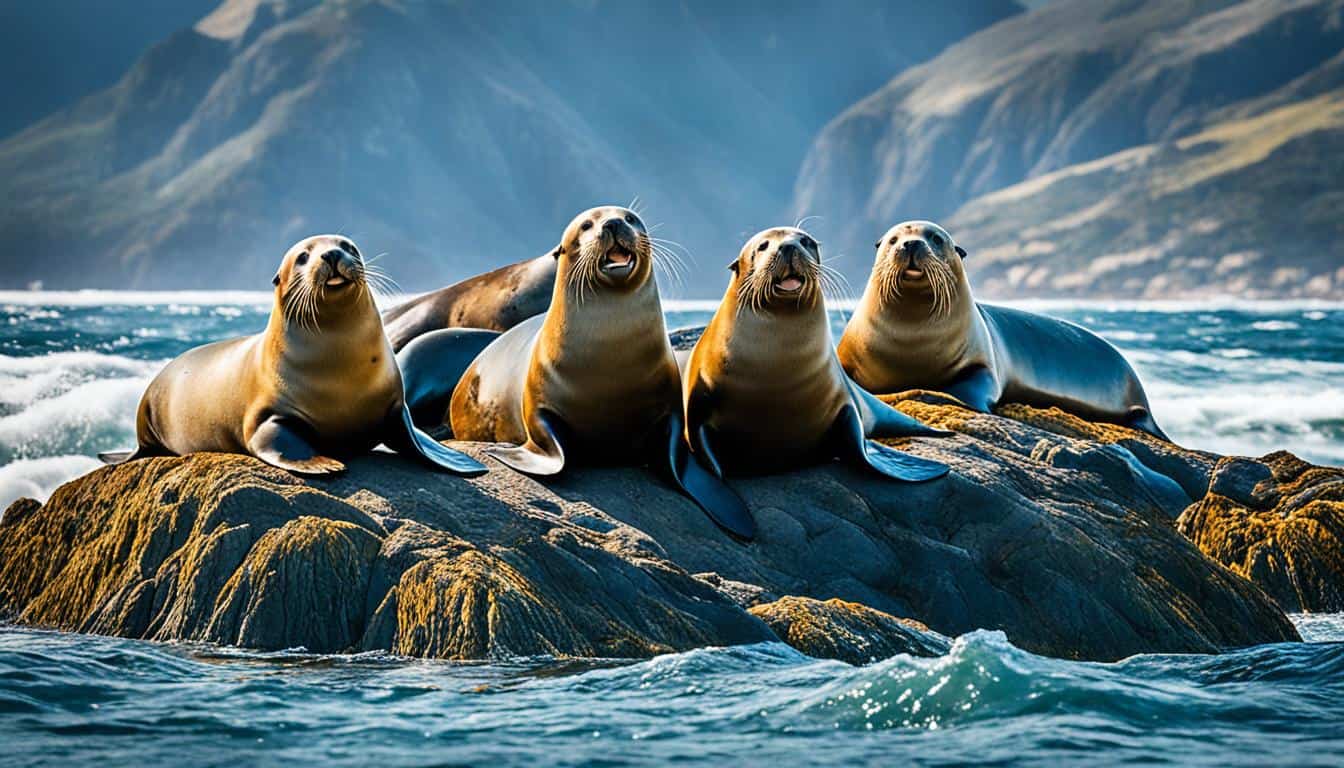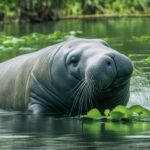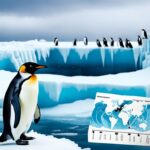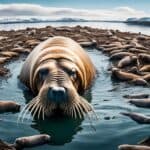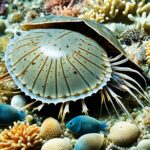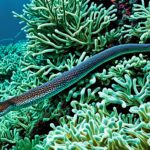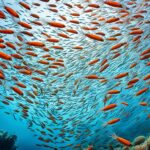Sea lions are fascinating marine mammals that are key to the health of our oceans. When we ask, “Are sea lions endangered?”, we find that their status changes with each species and location. Human actions and changes in the environment have greatly affected these creatures. Let’s dive into their world to learn more about their numbers and why they matter in conservation efforts.
Understanding Sea Lions and Their Habitat
Sea lions are known for their playful and social nature. They make up a diverse group of marine mammals. To truly appreciate them, we need to look at the different sea lion species, where they live, and their unique traits. It’s key to understand their habitat for protecting it.
Overview of Sea Lion Species
There are six main types of sea lions, each with its own special features and conservation status:
- Australian Sea Lion (Neophoca cinerea)
- Galapagos Sea Lion (Zalophus wollebaeki)
- New Zealand Sea Lion (Phocarctos hookeri)
- Steller Sea Lion (Eumetopias jubatus)
- South American Sea Lion (Otaria byronia)
- Californian Sea Lion (Zalophus californianus)
Learning about these species helps us understand their different homes and what they need to survive. Each sea lion species has its own way of living in the ocean, which helps keep marine ecosystems healthy.
Geographical Distribution of Sea Lions
Sea lions live in coastal areas all over the world, showing how adaptable they are to different ocean environments. Here’s where you can find them:
| Sea Lion Species | Geographical Range |
|---|---|
| Austrailian Sea Lion | Western and southern coasts of Australia |
| Californian Sea Lion | From Alaska to Costa Rica |
| Steller Sea Lion | Regions from Alaska to Russia |
| Galapagos Sea Lion | Galapagos Islands |
| New Zealand Sea Lion | Coastal waters of New Zealand |
| South American Sea Lion | Coast of South America, primarily in Argentina, Chile, and Peru |
This shows how diverse sea lion habitats are and why we need specific conservation efforts in each area.
Unique Characteristics of Sea Lions
Sea lions are known for their playful and smart nature. They have some key traits:
- Long flippers that help them move in water and on land
- They often live in big groups
- They play a big role as both predators and prey in their ocean homes
These traits show how adaptable and important sea lions are. They highlight the need to protect their habitats so they can keep living in our oceans.
Are Sea Lions Endangered?
It’s important to know about the current status and protection efforts for sea lions. Each species has its own challenges, affecting their conservation status. You might be curious about the laws that protect these marine mammals.
Conservation Status of Different Sea Lion Species
The conservation status of sea lions varies across six species. For example, the Australian, Galapagos, and New Zealand sea lions are endangered. On the other hand, the Steller sea lion is near threatened. The South American and Californian sea lions are listed as least concern, showing a stable population. However, threats have led to a decline, especially in the Australian sea lion population, which now has about 6,500 individuals.
Legislation Protecting Sea Lions
Many laws protect sea lion species. In the U.S., the Endangered Species Act (ESA) listed Steller sea lions as threatened in 1990 due to their decreasing numbers. This law is key to conservation, with strict monitoring and protective actions. The Marine Mammal Protection Act also helps by keeping habitats safe and limiting harmful fishing.
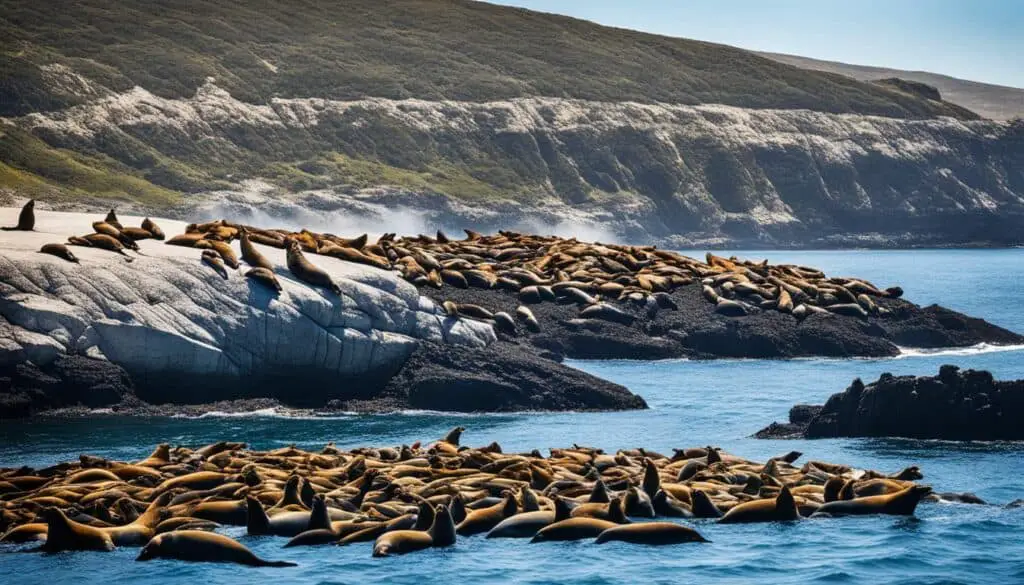
| Sea Lion Species | Conservation Status | Estimated Population |
|---|---|---|
| Australian Sea Lion | Endangered | ~6,500 |
| Galapagos Sea Lion | Endangered | N/A |
| New Zealand Sea Lion | Endangered | N/A |
| Steller Sea Lion | Near Threatened | N/A |
| South American Sea Lion | Least Concern | N/A |
| Californian Sea Lion | Least Concern | N/A |
Threats to Sea Lions
Sea lions face many challenges that threaten their survival. These threats include pollution, climate change, harmful fishing, and diseases. Knowing about these threats can help us work towards their conservation.
Pollution and Climate Change
Pollution and climate change are big risks for sea lions. Pollutants from land harm their marine homes. These toxins can make sea lions sick and change their behavior.
Climate change also affects their homes. It changes where they can find food. This makes it hard for them to eat and survive.
Fishing Practices and Bycatch
Fishing is a big threat to sea lions, especially bycatch. Gillnets and lobster traps can trap and hurt them. This can lead to serious injuries or death.
These harmful fishing methods harm sea lions and the ocean they live in. It’s important to find better ways to fish to protect them.
Diseases Affecting Sea Lion Populations
Diseases are another big danger for sea lions. In crowded areas, diseases spread fast. This can lead to many deaths, especially among young ones.
This makes it hard to keep their numbers stable. Combining this with other threats makes saving sea lions tough.
Sea Lion Population Decline
The sea lion population is facing a big problem. Their numbers are going down, which is bad news for the ocean. Changes in the environment are a big part of the issue.
These changes mess with their homes and food. It’s important to know why their numbers are dropping.
Statistics on Declining Populations
Studies show that some sea lion groups are really struggling. For instance, the New Zealand sea lion might not exist in 20 years. The Galapagos sea lion numbers dropped by 24% after the 2015 El Niño event.
These facts show a big problem for marine life. They make us wonder about the future of sea lions and other marine animals.
Impact of Environmental Changes on Sea Lion Numbers
Changes in the environment are hurting sea lions. Warming oceans and changing currents affect where they find food. This makes it harder for them to feed and have babies.
Understanding these effects is key to saving sea lions. We need to act to protect their homes and food.
Marine Mammal Conservation and Protecting Sea Lions
To save sea lions, we must work hard on marine mammal conservation, especially for endangered ones. Creating protected marine areas is a key step. It keeps their important places safe for breeding and eating. By stopping harmful fishing and human actions near these spots, we help protect sea lions.
Getting the public involved is key to success. Symbolic sea lion adoptions raise money and teach people why we need to protect sea lions and their homes. It’s important to work with local communities to clean up and reduce plastic pollution. This helps keep sea lion habitats healthy and safe.
Your actions can make a difference. By joining conservation efforts, you can help stop the decline of sea lions and other marine animals. Every little bit counts, from supporting groups to spreading the word. Together, we can make sure sea lions continue to live in the wild for years to come.
FAQ
Are sea lions endangered?
Yes, some sea lions like the Australian, Galapagos, and New Zealand species are endangered. Others, like the Steller sea lion, are near threatened.
What is the conservation status of different sea lion species?
Conservation status varies. The Australian sea lion faces big threats. But, the South American and Californian sea lions are okay.
What legislation protects sea lions?
In the U.S., the Endangered Species Act (ESA) and the Marine Mammal Protection Act protect sea lions. They set up safe areas and control harmful actions.
What threats do sea lions face?
Sea lions face many threats. These include pollution, climate change, fishing that catches them by accident, and diseases in crowded areas.
How does pollution affect sea lion populations?
Pollution harms sea lions with toxins and algae blooms. This can hurt their brains and lower their health, making it harder for them to survive.
What impact do fishing practices have on sea lions?
Fishing with gillnets often catches sea lions by accident. This can hurt or drown them.
Can you provide statistics on declining sea lion populations?
Yes, the New Zealand sea lion is at high risk of extinction. After the 2015 El Niño, the Galapagos sea lion population dropped by 24%.
How do environmental changes affect sea lion numbers?
Changes in the environment, like warmer oceans and different currents, affect where they find food and how well they can have babies.
How can marine mammal conservation efforts help protect sea lions?
Conservation efforts create safe marine areas, control fishing, and protect their homes. This helps sea lions recover.
What can individuals do to support sea lion conservation?
People can help by cleaning up the ocean, adopting sea lions, and supporting sustainable fishing. They can also speak up for these animals.

